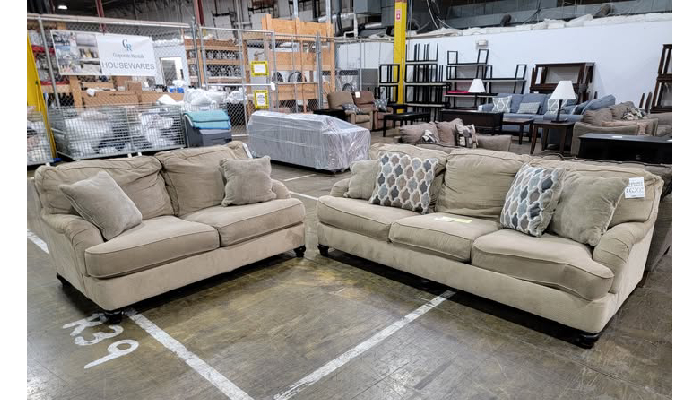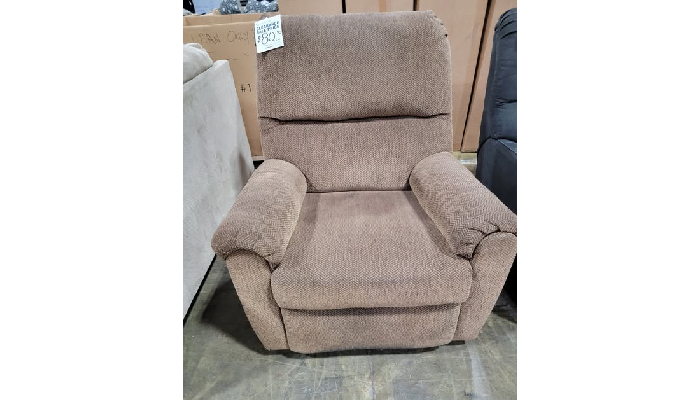How To Inspect Used Living Room Furniture For Quality Before You Buy?
When shopping for used living room furniture in Maryland, it’s important to assess the quality of the items before making a purchase. While buying secondhand furniture can be a great way to save money, ensure that the pieces you choose are not only stylish but durable and functional for your home. Here’s a comprehensive guide on how to inspect used living room furniture to make sure it’s worth your investment.
Understand What You’re Looking For In Used Living Room Furniture?
Before heading out to shop for Used Living Room Furniture In Maryland, have a clear idea of what you want. Do you need a couch, chairs, coffee table, or side tables? Consider the style, size, and color that will complement your living room. Also, set a budget range for your purchase so you can focus your inspection on pieces that meet both your functional and financial needs.
Examine The Frame Construction
The frame is the backbone of any piece of furniture, and it’s essential to inspect it carefully. A well-constructed frame ensures longevity and stability, while a poorly made one may lead to discomfort or breakage down the road. When inspecting used living room furniture in Maryland, check the following:
- Material: The best frames are made of hardwoods like oak, maple, or ash. Softwoods, like pine, are less durable, but still common in lower-end pieces. Avoid furniture with a particleboard or MDF frame as these are less stable and more likely to deteriorate.
- Joinery: Look at how the joints are put together. Dovetail or dowel joints are the strongest and most durable. Stapled or glued joints may indicate lower quality or past repairs. Shake the frame gently to check for any loose or creaky joints.
- Condition: Check for visible signs of damage like cracks, chips, or warping. The frame should be intact without any signs of sagging or imbalance. Sit or lean on the piece to check for wobbling or instability.
Inspect The Cushions And Upholstery
The cushions and upholstery contribute to both the comfort and aesthetics of your living room furniture. When inspecting used living room furniture in Maryland, make sure you look at both the condition of the fabric and the comfort of the seating.
- Cushion Fill: Sit on the cushions and press them to gauge their firmness. High-density foam is commonly used for quality cushions, but down feathers or a foam-down blend can also provide a luxurious feel. Make sure the cushions are even and do not sag when you sit. A cushion that feels too soft may lose its shape over time, while a cushion that’s too firm might not be as comfortable for long-term use.
- Upholstery Condition: Inspect the fabric for tears, stains, or signs of wear. Fabric can fade or get worn thin in high-traffic areas, and any visible damage can affect the piece’s appearance and durability. Check both the front and back of the cushions, as well as hidden areas underneath. Ensure there are no unpleasant odors like mildew, which could indicate improper storage.
- Upholstery Type: Consider the type of fabric that best fits your needs. Leather, while expensive, is durable and easy to clean. Fabric upholstery, on the other hand, comes in a variety of patterns and colors but may require more maintenance. Microfiber is a popular choice for families, as it is stain-resistant and easy to clean.
Check For Signs Of Pest Infestation
One of the biggest concerns when buying used living room furniture in Maryland is the possibility of pests, especially bedbugs or other insects. Before you buy, it’s important to inspect the furniture for signs of an infestation.
- Visible Bugs: Look for any signs of pests, such as tiny brown spots or eggs in the seams or fabric. Check underneath the cushions and in any crevices for small dark spots or live insects.
- Fecal Stains: Bedbugs often leave behind tiny, dark spots that look like pepper grains. These marks are a sign of infestation and should be avoided at all costs.
- Musty Smells: A musty or damp smell can indicate the presence of mold, mildew, or insects. It’s best to steer clear of furniture with these kinds of odors.
Test The Furniture For Comfort And Usability
Don’t buy used living room furniture in Maryland without giving it a try! Comfort is subjective, and only by sitting on the pieces will you be able to judge whether they’ll suit your needs.
- Sit Test: Take the time to sit on the couch or chair and evaluate its comfort level. Does it offer adequate support? Does it sink too much or feel too hard? Try sitting in different positions and moving around to see if the furniture shifts or feels uncomfortable.
- Recliners and Adjustable Features: If the furniture includes recliners or adjustable parts (like a sofa bed or chaise lounge), test these features thoroughly. Ensure that the mechanism works smoothly and that the piece can be adjusted to your desired position without issues.
Evaluate The Legs And Supports
Legs and support systems play a major role in ensuring that your furniture is stable and functional. Wobbly legs or broken supports can make a piece unsafe or uncomfortable to use.
- Legs: Check that the legs are securely attached and show no signs of damage or instability. Wood and metal legs should be in good condition and not wobble when weight is applied.
- Supports: For couches and chairs with springs or metal supports, check for any visible damage or sagging. If the springs are loose, broken, or misshapen, this can affect the overall comfort and durability of the piece.
Inspect The Style And Fit For Your Space
While checking the structural integrity and comfort of the used living room furniture, don’t forget to ensure that the style fits with your existing décor. Maryland offers a variety of furniture styles, from traditional to modern, so choose a piece that matches your taste and living room design.
- Size: Measure the dimensions of the furniture and compare them to the space where you intend to place it. Make sure the piece will fit comfortably without overwhelming the room or obstructing walkways.
- Style: Look for furniture that matches your living room’s aesthetic. Consider the finish of the wood, the fabric pattern, and the overall design to make sure it aligns with the theme of your space.
Conclusion
Buying used living room furniture in Maryland can be a rewarding experience if you know what to look for. By carefully inspecting the frame, cushions, upholstery, and signs of wear and tear, you can ensure that your purchase will last for years to come. Don’t forget to test the furniture for comfort, check for pests, and consider the style and fit for your space. With these tips in mind, you can confidently buy used living room furniture that meets both your budget and quality expectations, creating a comfortable and stylish space in your home.





